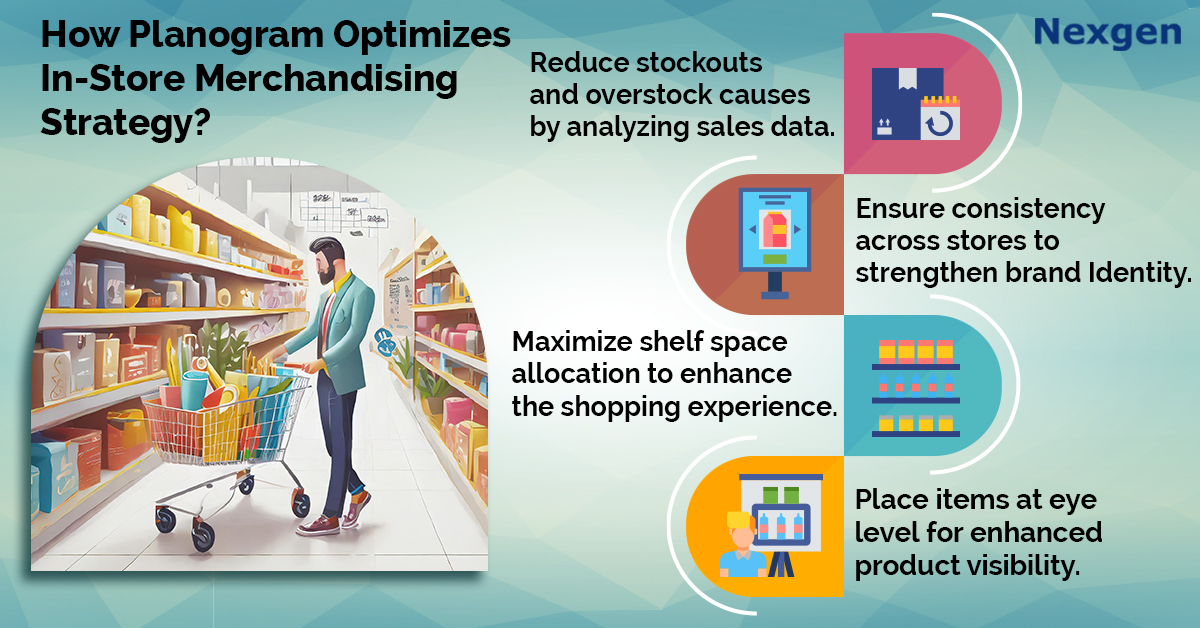In retail, the positioning and display of products can make a significant difference in sales and customer satisfaction. Effective in-store merchandising goes beyond simply placing products on shelves; it involves a strategic approach to product placement that can enhance visibility, drive impulse purchases, and improve the overall shopping experience. This is where planograms come in.
A planogram is a detailed visual map that indicates the placement of products on shelves or displays in a retail store. By leveraging visual merchandising techniques, planograms optimize in-store merchandising strategies, ensuring that the right products are placed in the right locations to maximize sales and enhance the customer experience. It provides specific instructions on where each item should be placed on shelves, in terms of both horizontal and vertical positioning. Planograms can be simple or highly detailed, depending on the complexity of the store and the diversity of its product line.
The Role of Visual Merchandising
Visual merchandising involves creating visually appealing displays that attract customers and encourage them to make purchases. It combines artistic principles with psychological insights to craft displays that not only look good but also drive sales. Planograms use these principles to optimize the layout of products in the store. Following are some benefits of using planograms in visual merchandising:

- Maximized shelf space utilization: Planograms ensure that every inch of shelf space is used effectively. By placing high-demand products or cross-merchandising items in prominent locations and less popular items in secondary positions, stores can make the most of their available space. In most stores, high-demand products are positioned where customers are most likely to see them first, and less popular or niche cereal brands are placed on the lower and upper shelves. While still visible, these items are not in the immediate line of sight. This strategic positioning ensures that every inch of shelf space is utilized without crowding out high-demand products. Shoppers who are specifically looking for these niche items can still find them, but their placement does not detract from the visibility of the more popular choices.
- Consistency across stores: For retailers with multiple locations, planograms ensure a consistent customer experience. Shoppers can find products in the same places, regardless of which store they visit, leading to increased customer satisfaction. For instance, if you are a grocery store retailer, with multiple stores across the region, there will be a consistent and familiar layout that makes your shoppers feel connected to your store. This uniformity is achieved through planograms. For example, fresh fruits and vegetables are always displayed in the same order, with bananas and apples prominently placed at the front. This predictable shelf layout ensures your shopper spends more time searching for their favorite items.
- Enhanced product visibility: By strategically placing products at eye level or in high-traffic areas, planograms increase product visibility. This is crucial for new or promotional items that retailers want to highlight. Imagine your shopper walking into the store, eager to pick up a few essentials and discover something new. As they navigate the aisles, certain products naturally catch their eye. This is not by chance, but the result of strategic planning using planograms designed to enhance product visibility. For example, placing the newest flavors of a popular brand of chips placed at eye level in the snack aisle can make it easy for customers to spot and consider buying them.
- Improved inventory management & data-driven insights: Planograms help with better inventory management by ensuring that popular items are always in stock and readily available. This reduces the chances of stockouts and overstock situations. Modern planograms are often created using sophisticated software that analyzes sales data and customer behavior. This data-driven approach ensures that product placement decisions are based on actual performance metrics, leading to more effective merchandising strategies.
Overview of Nexgen POG
Nexgen POG is a robust and user-friendly cloud-based visual merchandising tool. It is designed for quick and efficient planogramming with minimal effort. Planogram in retail can be designed by easily dragging and dropping the products. The multi-device compatibility feature of POG allows you to obtain, share and edit planogram on any device, including your phone. It helps in designing store-specific planograms for increased product visibility and sales.
Get Your Free Trial Now!